PTEN and DNA-PK determine sensitivity and recovery in response to WEE1 inhibition in human breast cancer
- PMID: 32628111
- PMCID: PMC7338058
- DOI: 10.7554/eLife.57894
PTEN and DNA-PK determine sensitivity and recovery in response to WEE1 inhibition in human breast cancer
Abstract
Inhibition of WEE1 kinase by AZD1775 has shown promising results in clinical cancer trials, but markers predicting AZD1775 response are lacking. Here we analysed AZD1775 response in a panel of human breast cancer (BC) cell lines by global proteome/transcriptome profiling and identified two groups of basal-like BC (BLBCs): 'PTEN low' BLBCs were highly sensitive to AZD1775 and failed to recover following removal of AZD1775, while 'PTEN high' BLBCs recovered. AZD1775 induced phosphorylation of DNA-PK, protecting cells from replication-associated DNA damage and promoting cellular recovery. Deletion of DNA-PK or PTEN, or inhibition of DNA-PK sensitized recovering BLBCs to AZD1775 by abrogating replication arrest, allowing replication despite DNA damage. This was linked to reduced CHK1 activation, increased cyclin E levels and apoptosis. In conclusion, we identified PTEN and DNA-PK as essential regulators of replication checkpoint arrest in response to AZD1775 and defined PTEN as a promising biomarker for efficient WEE1 cancer therapy.
Keywords: AZD1775; DNA-PK; PTEN; WEE1; basal-like breast cancer; cancer biology; cyclin E; mouse.
© 2020, Brunner et al.
Conflict of interest statement
AB, AS, HJ, MF, JV, MG, OF, EF, CS, JL, JR, LL, OS No competing interests declared
Figures
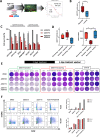
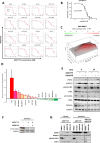

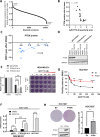
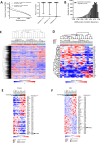
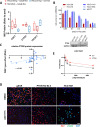

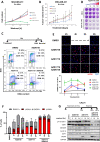
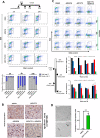
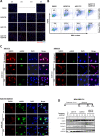
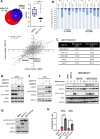
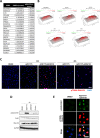

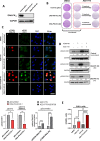
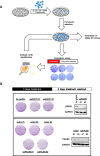
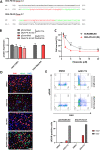
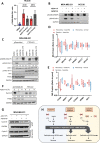
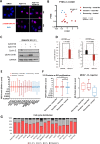
Similar articles
-
Pharmacological Inhibition of WEE1 Potentiates the Antitumoral Effect of the dl922-947 Oncolytic Virus in Malignant Mesothelioma Cell Lines.Int J Mol Sci. 2020 Oct 4;21(19):7333. doi: 10.3390/ijms21197333. Int J Mol Sci. 2020. PMID: 33020398 Free PMC article.
-
WEE1 inhibitor, AZD1775, overcomes trastuzumab resistance by targeting cancer stem-like properties in HER2-positive breast cancer.Cancer Lett. 2020 Mar 1;472:119-131. doi: 10.1016/j.canlet.2019.12.023. Epub 2019 Dec 19. Cancer Lett. 2020. PMID: 31866466
-
Targeting AXL and mTOR Pathway Overcomes Primary and Acquired Resistance to WEE1 Inhibition in Small-Cell Lung Cancer.Clin Cancer Res. 2017 Oct 15;23(20):6239-6253. doi: 10.1158/1078-0432.CCR-17-1284. Epub 2017 Jul 11. Clin Cancer Res. 2017. PMID: 28698200 Free PMC article.
-
Strategic development of AZD1775, a Wee1 kinase inhibitor, for cancer therapy.Expert Opin Investig Drugs. 2018 Sep;27(9):741-751. doi: 10.1080/13543784.2018.1511700. Epub 2018 Aug 21. Expert Opin Investig Drugs. 2018. PMID: 30102076 Review.
-
A WEE1 family business: regulation of mitosis, cancer progression, and therapeutic target.J Hematol Oncol. 2020 Sep 21;13(1):126. doi: 10.1186/s13045-020-00959-2. J Hematol Oncol. 2020. PMID: 32958072 Free PMC article. Review.
Cited by
-
An update of predictive biomarkers related to WEE1 inhibition in cancer therapy.J Cancer Res Clin Oncol. 2024 Jan 17;150(1):13. doi: 10.1007/s00432-023-05527-y. J Cancer Res Clin Oncol. 2024. PMID: 38231277 Free PMC article.
-
Circular RNA circPRMT5 is upregulated in breast cancer and is required for cell proliferation and migration.Turk J Med Sci. 2022 Apr;52(2):303-312. doi: 10.55730/1300-0144.5316. Epub 2022 Apr 14. Turk J Med Sci. 2022. PMID: 36161608 Free PMC article.
-
Myt1 overexpression mediates resistance to cell cycle and DNA damage checkpoint kinase inhibitors.Front Cell Dev Biol. 2023 Nov 2;11:1270542. doi: 10.3389/fcell.2023.1270542. eCollection 2023. Front Cell Dev Biol. 2023. PMID: 38020882 Free PMC article.
-
Identification of a Notch transcriptomic signature for breast cancer.Breast Cancer Res. 2024 Jan 3;26(1):4. doi: 10.1186/s13058-023-01757-7. Breast Cancer Res. 2024. PMID: 38172915 Free PMC article.
-
DNA damage response in breast cancer and its significant role in guiding novel precise therapies.Biomark Res. 2024 Sep 27;12(1):111. doi: 10.1186/s40364-024-00653-2. Biomark Res. 2024. PMID: 39334297 Free PMC article. Review.
References
-
- Aarts M, Sharpe R, Garcia-Murillas I, Gevensleben H, Hurd MS, Shumway SD, Toniatti C, Ashworth A, Turner NC. Forced mitotic entry of S-phase cells as a therapeutic strategy induced by inhibition of WEE1. Cancer Discovery. 2012;2:524–539. doi: 10.1158/2159-8290.CD-11-0320. - DOI - PubMed
-
- Aarts M, Bajrami I, Herrera-Abreu MT, Elliott R, Brough R, Ashworth A, Lord CJ, Turner NC. Functional genetic screen identifies increased sensitivity to WEE1 inhibition in cells with defects in fanconi Anemia and HR pathways. Molecular Cancer Therapeutics. 2015;14:865–876. doi: 10.1158/1535-7163.MCT-14-0845. - DOI - PMC - PubMed
-
- Arabi A, Ullah K, Branca RM, Johansson J, Bandarra D, Haneklaus M, Fu J, Ariës I, Nilsson P, Den Boer ML, Pokrovskaja K, Grandér D, Xiao G, Rocha S, Lehtiö J, Sangfelt O. Proteomic screen reveals Fbw7 as a modulator of the NF-κB pathway. Nature Communications. 2012;3:976. doi: 10.1038/ncomms1975. - DOI - PMC - PubMed
-
- Ashley AK, Shrivastav M, Nie J, Amerin C, Troksa K, Glanzer JG, Liu S, Opiyo SO, Dimitrova DD, Le P, Sishc B, Bailey SM, Oakley GG, Nickoloff JA. DNA-PK phosphorylation of RPA32 Ser4/Ser8 regulates replication stress checkpoint activation, fork restart, homologous recombination and mitotic catastrophe. DNA Repair. 2014;21:131–139. doi: 10.1016/j.dnarep.2014.04.008. - DOI - PMC - PubMed
Publication types
MeSH terms
Substances
Associated data
- Actions
Grants and funding
LinkOut - more resources
Full Text Sources
Medical
Molecular Biology Databases
Research Materials
Miscellaneous

